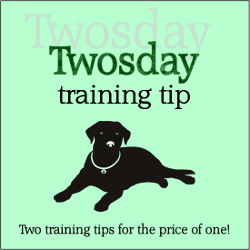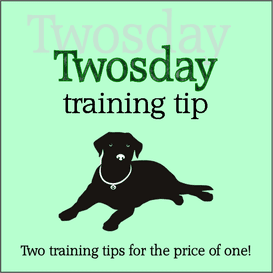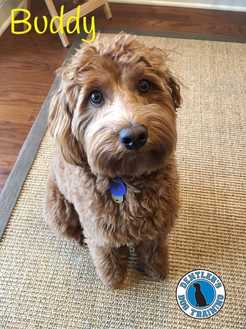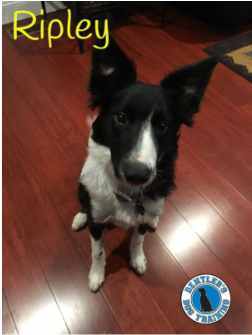 Buddy, a 3-year old Maltese/Miniature Poodle mix, has some generalized anxiety, but it can also be triggered when people enter and leave the home. Before we begin a desensitization and counter-conditioning program we will teach him some impulse control behaviors.  The Look cue that we taught Cali has worked great to help redirect her when she gets focused on the older dog in the house. To help even more we taught her Leave It today and she rocked it!  TIP #1: THE 3 WAYS TO TEACH, PT. 2 To teach your dog to do something specific on cue, you get your dog to do that particular behavior, then reward it. The tricky part is getting your dog to do the behavior. There are 3 ways to do this: Luring. Shaping. Capturing. Shaping. Shaping means rewarding approximations of a behavior, and then building on that until you get the behavior you want. It is like learning to dance. You don’t start by dancing the Viennese Waltz; first, you learn the basic steps, then you practice correct body position, and so on. Shaping is the dog-training equivalent of this training method. Say you want to teach your dog the down cue. First you would reward the dog when his head goes down toward the ground. Next, for bending one front elbow. Then for bending both front elbows. Finally, you would reward a full down. TIP #2: TO TUG OR NOT TO TUG, PT. 2 Tug, or any vigorous activity for that matter, played without rules or functioning human brain cells is potentially dangerous. But the baby has been thrown out with the bath water in this case: why deprive dogs and owners of one of the best energy burners and outlets there is? It's good because it is intense, increases dog focus and confidence, and plugs into something very deep inside dogs. The owner becomes the source of a potent reinforcing activity, and there is a payoff in terms of lowered incidence of behavior problems due to understimulation. It's also extremely efficient for the owner in terms of space and time requirements, and it can be used as a convenient reinforcement option in obedience. - excerpted from The Culture Clash  After we cleaned up Buddy's Down (he was immediately doing a roll-over) he learned some impulse control with Wait and Stay. We even practiced staying while we answered the door. Buddy would do it for me but not his pet parents, so that will take some more practice.  After a quick refresher on Sit and Down, we taught Ripley how to Wait and Stay. He is so eager to please and such a fast learner that he makes it look easy. He even stayed as his favorite toy - the cat - ran by!  Cali is a 7-month old Dalmatian who is energetic and happy - until the older, resident dog gets near her food! We will begin a counter-conditioning and management program so all involved can live peacefully.  TIP #1: THE 3 WAYS TO TEACH, PT. 1 To teach your dog to do something specific on cue, you get your dog to do that particular behavior, then reward it. The tricky part is getting your dog to do the behavior. There are 3 ways to do this: Luring. Shaping. Capturing. Luring. Luring means showing the dog what you want and then rewarding that. The most common way to lure is to put a piece of food right on your dog’s nose (close enough that he can lick it) and move the food in the direction you want him to go. Where the nose goes, the rest of the dog follows. If, for example, you put a treat right by your dog’s nose and slowly lift your hand up and toward his back end, your dog’s nose will go up and his bottom will go down. Release the treat to reward that body position and you are halfway to having trained your dog to sit on cue. TIP #2: TO TUG OR NOT TO TUG, PT. 1 Dog owners have been admonished for decades by trainers, breeders and veterinarians to never play tug of war with their dogs because it risks increasing aggression and/or dominance in the dog. I think they've muddled predatory behavior, which tug actually is, with agnostic (conflict resolution) behavior, which tug is not. Played with rules, tug of war is a tremendous predatory energy burner and good exercise for both dog and owner. Like structured roughhousing, it serves as a good barometer of the kind of control you have over the dog, most importantly over his jaws. The game doesn't make the dog a predator; he already is one. The game is an outlet. - excerpted from The Culture Clash  Buddy is a 9-month old Labrador Retriever/Miniature Poodle mix. He needs a little help with his basic manners - he jumps when greeting people and pulls on leash - so we will be helping him out. Look at that face! |
AuthorJeff Dentler, CPDT-KA, IAABC-ADT, FFCP, CTDI Archives
July 2024
Categories |



 RSS Feed
RSS Feed